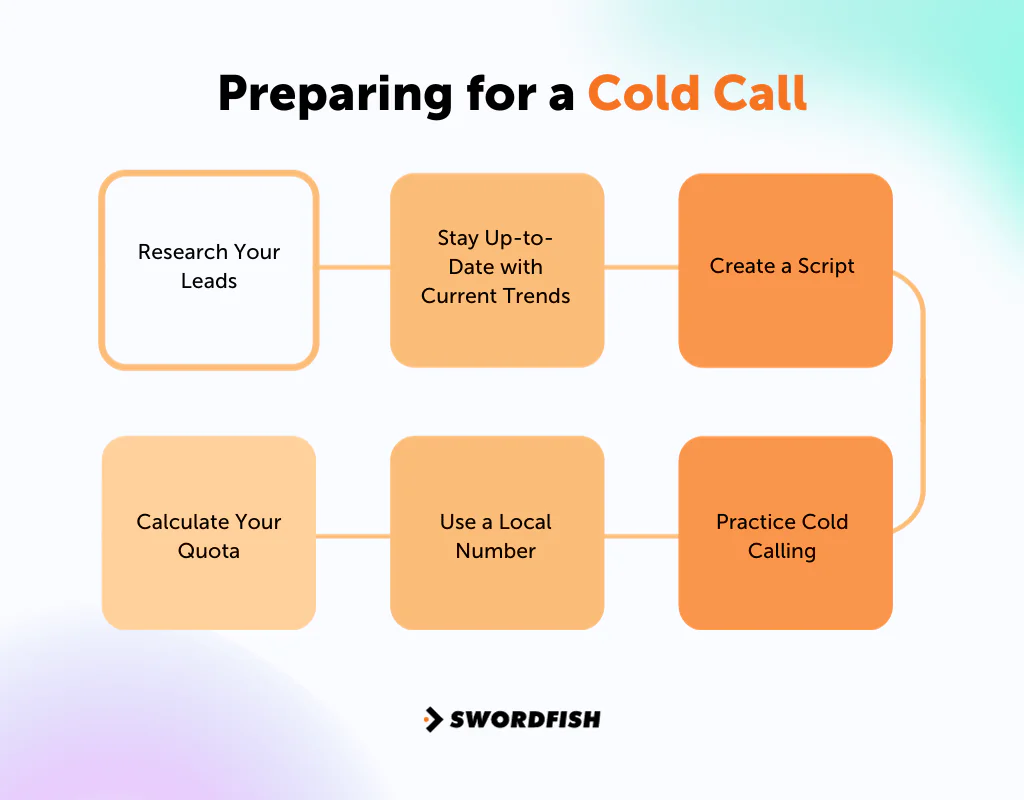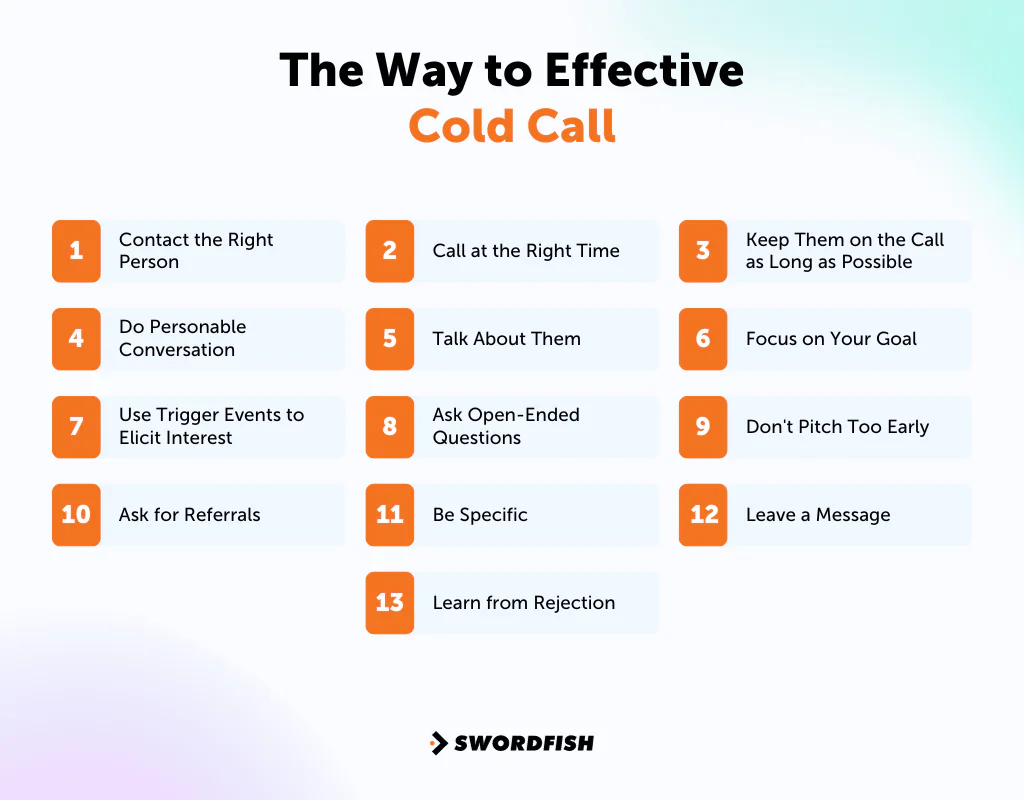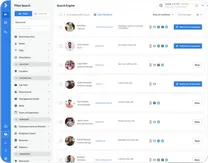
Cold calling might seem old-fashioned, but it’s still a favorite way to reach out to people.
Why? Because it’s direct and personal. You pick up the phone and talk to someone right away.
Many people like cold calling because it’s a quick way to set up meetings. But, with so many ways to communicate these days, just calling someone isn’t enough. We need some good tips to make it work better. That’s why cold calling tips to get a meeting are so helpful.
In this guide, we’ll share some easy-to-follow advice to help you make successful calls and set up those important meetings. Let’s get started!
What is Cold Calling?

Cold calling is one of the pillars of the sales world. At its core, the cold calling technique is a direct sales technique where salespeople initiate contact with potential customers.
Like other methods, there’s no prior interaction or relationship with these prospects. It’s all about reaching out to someone entirely new.
To effectively use LinkedIn Sales Navigator, it’s essential to understand the key differences and functionalities that distinguish it from using regular LinkedIn features. Sales Navigator offers specialized tools for sales professionals, including more precise search capabilities, personalized lead recommendations, and the ability to track potential prospects and customers.
These features are designed to enhance your sales strategy by providing deeper insights and a more targeted approach to networking and engagement. For more comprehensive details on how to maximize these benefits, consider exploring the available LinkedIn Sales Navigator plans, tailored to fit various professional needs and goals.
19 Cold Calling Tips to Get a Meeting With Decision-Makers and Boost Sales Conversions
Cold calling is a proactive approach. It’s about taking the initiative, stepping out of one’s comfort zone, and reaching out to potential clients.
However, it’s not always easy and often comes with its fair share of rejections. But when done right, it can be a game-changer for businesses. And it can open doors to new opportunities and markets.
Preparing for a Cold Call

Let’s explore the preparing steps to ensure your cold calls hit the mark.
1. Research Your Leads
Before picking up the phone, knowing who’s on the other end is crucial. So, to build a prospect research on your leads is a must.
You must understand the business, needs, and challenges of your lead. A well-informed call can distinguish between a receptive listener and a quick hang-up.
Utilize resources like social media platforms and company websites to gather valuable insights. When you prove knowledge about a lead, it builds trust and establishes a foundation for meaningful conversation.
2. Stay Up-to-Date with Current Trends
The business world evolves rapidly. Being aware of current trends in your industry and your lead’s industry can provide a significant advantage.
However, you showcase your dedication and awareness by referencing recent events or shifts in the market. This positions you as an expert and indicates that your product or service is relevant in the current landscape.
3. Create a Script
A structured approach often yields better results in cold calling. Draft a cold calling script that outlines the flow of the conversation. The goal isn’t to read verbatim but to have a guideline.
A well-crafted script ensures you cover essential points, handle objections gracefully, and steer the conversation towards a productive outcome.
4. Calculate Your Quota
Setting a clear target can drive motivation and provide a sense of direction. Determine how many calls you aim to make in a day or week.
By understanding your conversion rates, you can set realistic quotas. This not only helps in tracking performance but also in refining your approach based on results.
5. Use a Local Number
First impressions matter. When a lead sees a familiar area code, they’re more likely to answer the call. Using a local number can increase your answer rates and lend an air of credibility. It subtly communicates that you’re not too far away. Moreover, it makes the prospect more comfortable.
6. Practice Cold Calling
Like any skill, cold calling improves with practice. Before reaching out to potential leads, rehearse your pitch. Role-playing scenarios with colleagues can be beneficial.
It allows you to anticipate possible responses and refine your approach. The more you practice, the more confident and persuasive you’ll become.
The Way to Effective Cold Call

Effective cold calling combines strategy, research, and interpersonal skills. You can transform cold calls into potential business opportunities by adopting a thoughtful approach and genuinely focusing on the lead’s needs.
B2B cold calling, while challenging, can be a powerful tool for businesses when done right. Look into each strategy to ensure your cold calls are as effective as possible.
1. Contact the Right Person
Every organization has key decision-makers. It’s essential to identify and reach out to these individuals directly. By targeting the right person, you increase the likelihood of your call being productive.
Blindly reaching out without knowing who’s on the other end can waste time and resources. A little research can go a long way in ensuring your message reaches the ears that matter most.
2. Call at the Right Time
The success of a cold call can often hinge on its timing. It’s crucial to find that sweet spot when the person is most likely to be receptive. Early mornings or lunch breaks might not be ideal for people who are either gearing up for the day or taking a break.
Historically, late mornings and mid-afternoons have proven to be effective times. Timing your calls during these windows can increase the chances of a positive response.
3. Keep Them on the Call as Long as Possible
The longer you engage a lead, the better you can gauge their interest and needs. A brief call might not provide enough information or build the necessary rapport. Aim to charm their interest with relevant information and open-ended questions.
This gives you a clearer picture of their requirements and establishes a foundation for future interactions.
4. Do Personable Conversation
Nobody enjoys speaking in a monotone, robotic voice. Personalize your conversation by being genuine, friendly, and showing real interest in the lead’s needs.
Establishing a human connection makes you more likely to build trust and open the door for meaningful dialogue. People buy from people, so let your personality shine through.
5. Talk About Them
A successful cold call should revolve around the lead. Dive into their challenges, interests, and potential needs. Focusing on them demonstrates that you’ve done your homework and genuinely care about providing a solution.
This approach builds trust and positions you as a valuable and trustable partner rather than just another salesperson.
6. Focus on Your Goal
Building rapport is essential. But it’s crucial not to lose sight of the call’s primary objective. Whether it’s to introduce a product, set up a meeting, or gather information, ensure the conversation consistently moves towards that goal. Balancing friendly banter with a clear purpose ensures the call remains productive.
7. Use Trigger Events to Elicit Interest
Current events or recent changes in the industry can be excellent conversation starters. By referencing these trigger events, you showcase your awareness and relevance in the ever-evolving business.
This approach can also help position your product or service as a timely and necessary solution.
8. Ask Open-Ended Questions
Encouraging the lead to share more information is vital. Open-ended questions, which can’t be answered with a simple ‘yes’ or ‘no’, can provide more insights.
These questions allow you to understand their pain points better, tailor your pitch, and engage in a more meaningful conversation.
9. Don’t Pitch Too Early
Jumping straight into a sales pitch can be off-putting. It’s essential first to listen and understand your lead’s needs. And then introduce your solution.
By ensuring your field aligns with their requirements, you increase the chances of it resonating with them.
10. Ask for Referrals
Even if a lead isn’t interested, they might know someone who is. Always explore the possibility of referrals. This approach can expand your network and introduce you to potential clients you might not have reached otherwise.
11. Be Specific
Ambiguity can lead to confusion. Clearly outline what you’re offering, its benefits, and how it can address the lead’s needs. A well-defined proposition can capture interest and make your call memorable.
12. Leave a Message
If the lead doesn’t answer, don’t consider it a dead end. A concise, clear voicemail detailing the call’s purpose and a callback number can pique their interest for a future conversation.
13. Learn from Rejection
Rejections are inevitable in cold calling. Instead of being disheartened, view each rejection as a learning opportunity. Analyze the conversation, identify areas for improvement, and refine your approach for subsequent calls.
Final Note
Cold calling isn’t just about making numerous calls; it’s about making those calls count. When done right, with preparation and strategy, it can transform cold leads into potential business opportunities.
The beauty of cold calling is its personal touch, offering a direct line to potential clients.
As we conclude our guide on effective cold calling strategies, always remember: Marrying traditional methods with innovative techniques can be the key to mastering cold calling.
This approach not only opens doors but also paves the way for meaningful interactions with prospects.
Swordfish AI presents unparalleled B2B contact data, highlighting the direct lines and email IDs of elite executives a. Try Swordfish AI‘s offerings today.
Frequently Asked Questions
How can you improve your cold calling success rate?
Success in cold calling often comes down to preparation and approach. Researching your prospect thoroughly, using a flexible yet guiding script, and practicing active listening can significantly enhance your chances of securing a meeting.
What should I know about my prospect before cold calling?
Knowledge is power in cold calling. Familiarize yourself with the prospect’s business model, any recent company news, challenges they might be facing, and industry trends. This information will allow you to tailor your conversation, making it relevant and engaging.
How can I handle rejections during cold calls?
Rejections are a natural part of cold calling. The key is to remain professional and composed. Instead of taking it personally, use each rejection as a learning opportunity. Analyze what might have gone wrong and adjust your approach for future calls.
Are there any tools to assist with cold calling?
Yes, several tools can aid the cold calling process. CRM software can help track and manage leads. Call recording tools allow post-call analysis, and lead generation platforms can provide valuable insights into potential prospects.
How can I ensure my call doesn’t sound scripted?
Having a script is essential to cover key points. But using it as a roadmap rather than a rigid structure is crucial. Engage in genuine conversation, ask open-ended questions, and adapt based on the prospect’s responses. This makes the call feel more natural and personalized.


 View Products
View Products



